Seagrass fish feeding grounds 'lost like rain forests'
- Published
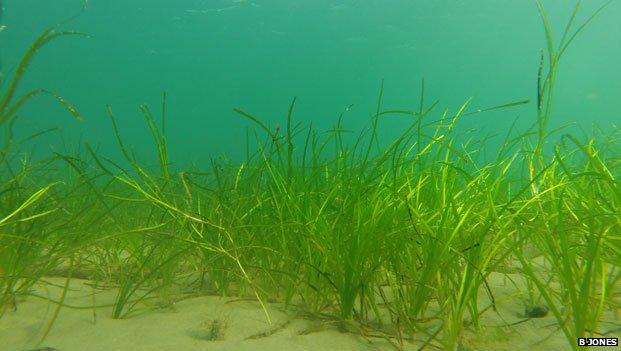
Seagrass is found just off the shoreline so is vulnerable to pollution and disturbance by marine anchors
Underwater fish "meadows" are being lost at the same rate as the Amazon rain forests, researchers have warned.
Seagrass is a key habitat for feeding and sheltering young fish, including plaice, haddock and pollock.
But every hour an area the size of two football pitches is destroyed.
Scientists from Swansea University believe the habitats need to be protected otherwise fishing stocks could be affected.
Lead researcher Dr Richard Unsworth says more sensitive boat mooring could help
"The rate of loss is equal to that occurring in tropical rainforests and on coral reefs yet it receives a fraction of the attention," said Dr Richard Unsworth, lead researcher.
"If you're a small fish, like a juvenile cod, then you need food and shelter. Seagrass meadows provide both."
The biggest threat is from poor water quality and damage caused by boat anchors and moorings.
The Swansea research, for the Natural Environment Research Council (Nerc), is part of a global conservation effort to save seagrass.
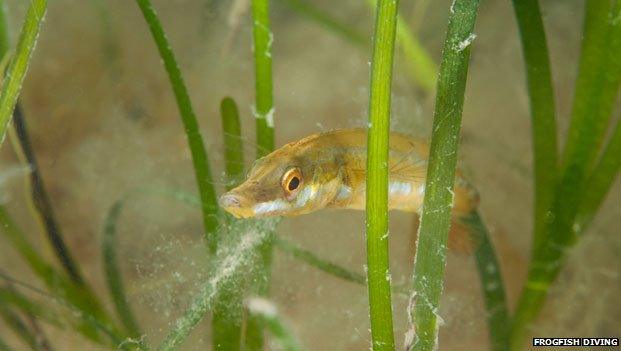
Juvenile fish like spined stickleback like shallow waters, usually just off the coast
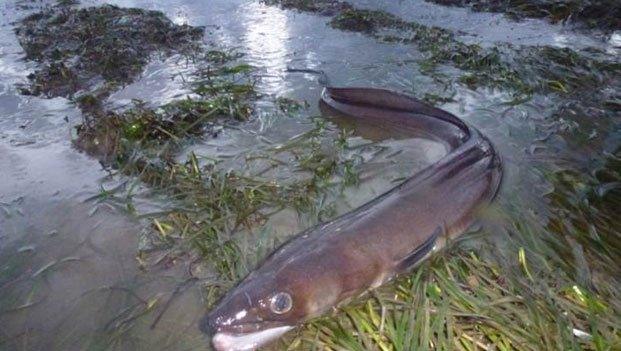
Seagrass - here with a conger eel - is usually found in sheltered waters, including coves and moorings
The team, using baited underwater camera systems and netting, took a year to measure the size and number of fish in seagrass meadows in the seas around Britain, and compared the results with nearby sand habitats.
The study included Porthdinllaen and Pen-y-Chain on the Llyn peninsula in Gwynedd.
In one seagrass site off the Gwynedd coast, divers found 42 fish species, 10 of which are important commercially.
Sand melt and pollack in seagrass off Porthdinllaen on the Gwynedd coast
"If there's lots of food available for them to eat and reduced predation, like there is in seagrass meadows, they don't spend all their time hunting for food so they're more likely to survive and put on weight faster," said Dr Unsworth.
"When you start to lose these habitats you'll see smaller juveniles and smaller fish stocks."
The research is part of a wider project assessing the benefits of seagrass meadows across the Atlantic, which is funded by the Welsh government and the EU.
"We want to work with partners around the country to look at trying to get this up the conservation agenda," said Dr Unsworth.
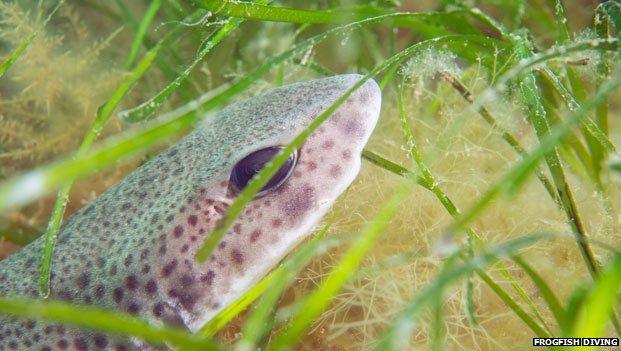
A dog fish feeding off sea grass, which is usually at a depth of just five to seven metres
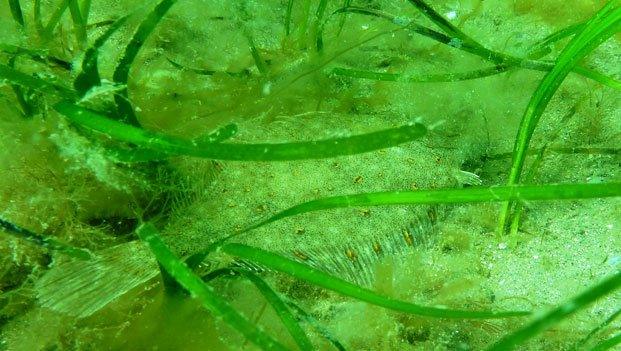
Plaice of safety - the seagrass shelter offers juvenile fish protection and a greater chance of survival
- Published12 August 2014
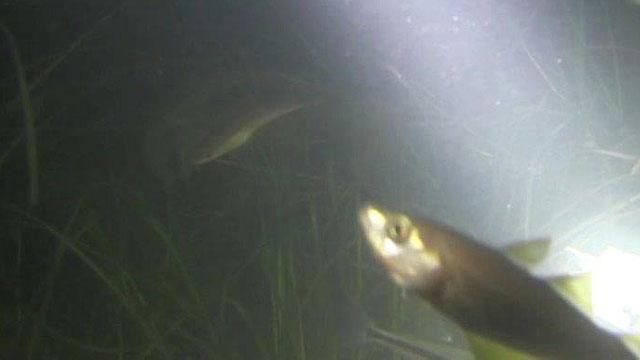
- Published21 July 2014
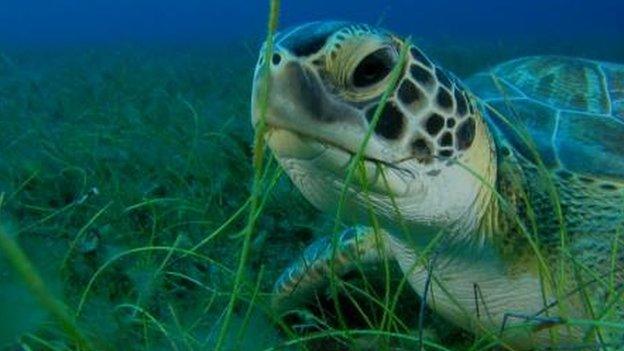
- Published26 March 2014
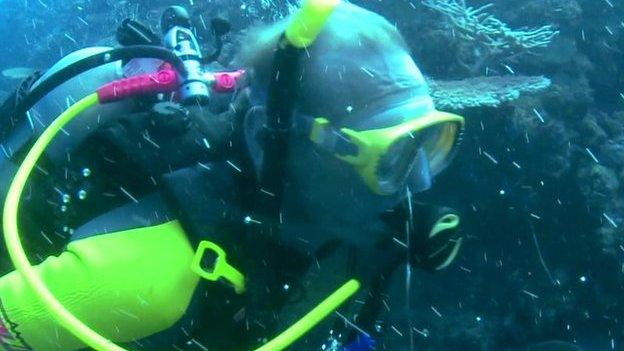
- Published20 November 2013

- Published18 July 2013
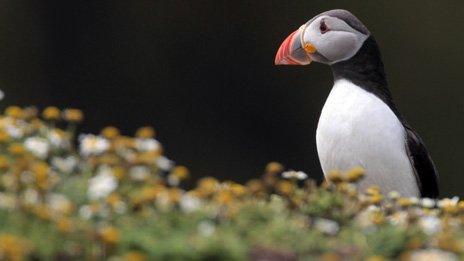
- Published23 August 2013
